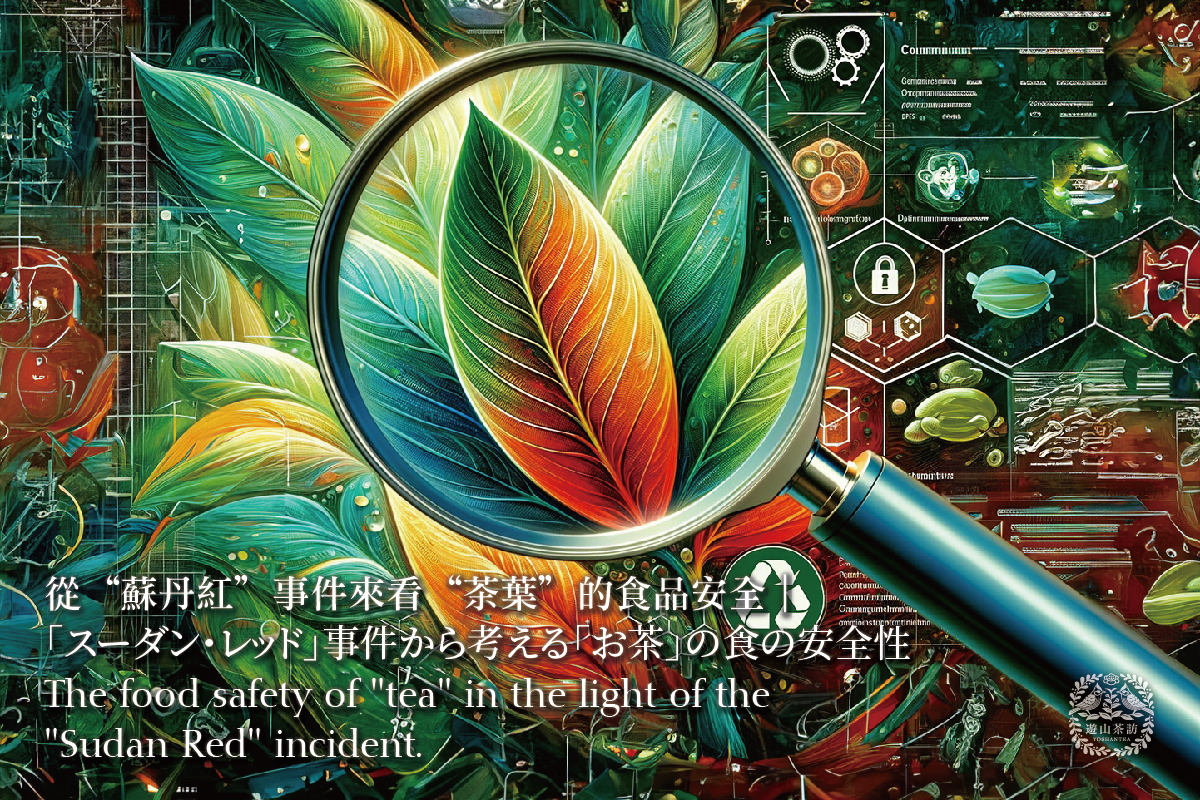Hello, everyone:
I am Andy, a tea enthusiast.
Recently, the topic of "Sudan Red" is quite hot.
Although it is not directly related to the food safety of tea.
However, from this incident, we can think deeply about the importance of "independent inspection".
Today, I would like to share with you the "food safety" of tea.
1. What is "food safety" gatekeeping?
"Food safety gatekeeping means that we should avoid hazardous substances in food that may cause discomfort, illness, or even death when consumed.
To put it simply, if the food does not cause any health hazards after it is consumed, then we have done a good job of "food safety" control.
2. What is the "food safety" of tea?
According to the Hazard Analysis Critical Control Point (HACCP) classification, it includes physical, chemical, and biological.
We would like to share some examples of "tea" with you to make it easier to understand.
-Physical: Stone, wood, bamboo, metal, insects, hair.
-Chemical: Pesticide residue.
-Biological: microbial breeding.
In the case of tea, the "pesticide residue" of tea is a sacred and inviolable statute, and the topic of excessive pesticide residue in tea often appears in the news, and the food and health authorities of various countries will notify each other of excessive pesticide residue problems. On the contrary, the presence of foreign substances in tea, such as stones or even insects found in tea leaves, may be removed and be fine, and is not the main concern of the news or the authorities.
However, for the sake of "food safety", these issues should be discussed.
Moldy tea leaves are a relatively rare "food safety" problem because tea leaves are quite dry and it is not easy for microorganisms to grow.
The most difficult food safety issue in tea leaves is not pesticide residue, but "hair". Some people say that X-ray machines can be used for screening, but it turns out that there is no way to do so, because X-ray machines use the difference in "density" to identify foreign objects. Coupled with the fact that hair is often wrapped into the tea leaves, we can only rely on the "naked eye" to weed out the foreign matter, if the hair is "intact" wrapped into the tea leaves, it is a "food safety" problem that cannot be solved at present. The problem.
"Hair" can be said to be the most difficult problem of "food safety".
3. How to control the "food safety" of tea?
In order of priority, the "pesticide residue" of tea should be the main concern. Although it is not uncommon for tea leaves to be tested for pesticide residues, the key is how to implement it. "Self-inspection" is a very important technique for "food safety". Although the report provided by the supplier is good, there is still a risk because the pesticide residue test is the result of "random" sampling from the raw materials of the tea leaves, and "random" does not represent the whole picture, and it is possible that the results of the test may not be the same every time.
Therefore, it is up to the company to send samples for testing "batch by batch", and according to the quantity of tea leaves in the batch, if the quantity of imported tea leaves is large, multiple inspections of pesticide residues should be conducted in the same batch, in order to significantly reduce the risk of "pesticide residues" occurring. "Sampling method" can refer to MIL-STD-1916.
4. Can pesticide residues in tea be removed?
Pesticide residues in tea cannot be removed and can only be removed by the metabolism of living plants. After our test results, high temperature roasting and long time storage cannot remove the "pesticide residue". Although pesticide residues are a major concern for us and a trade barrier for many countries, here is some data for your reference. According to the Acute Toxicity Classification of Pesticides by the Ministry of Agriculture, the LD50 for extremely toxic pesticides is less than 5mg/kg body weight. For a 60kg person, it would take 300mg to kill a person. According to Yoshantea's years of experience, the highest single pesticide residue test result is 2mg/kg, which means that a person would need to consume 150kg of dried tea leaves in one sitting to die.
In any case, the brand's "conscience" is the best tool to implement "food safety".
That's all for today, see you next time.
#yoshantea #taiwantea #dongdingtea #oolongtea #teafacotry #FSSC22000 #safetea #SudanRed #FoodSafety #SelfInspection #PesticideResidues #TeaSafety #SafetyScreening
